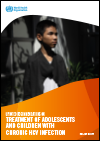What's New
Displaying results 281 - 290 of 4913
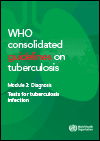
Resource | Guidelines,
The “WHO consolidated guidelines on tuberculosis. Module 3: Diagnosis – Tests for tuberculosis infection” is a new consolidated policy guideline on tests for TB infection. The policy includes, for the first-time recommendations on a new class of Mycobacterium tuberculosis antigen-based skin tests (TBSTs) and consolidates all currently existing recommendations for the diagnosis of TB infection, including the traditional tuberculin skin test (TST) and interferon-gamma release assays (IGRAs). IGRAs and TBSTs use Mycobacterium tuberculosis complex specific antigens and represent a significant advancement to TST which has been used for over half a century.
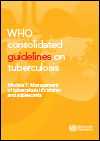
Resource | Guidelines,
The Updated guidelines on Management of tuberculosis in children and adolescents include new recommendations that cover diagnostic approaches for TB, shorter treatment for children with non-severe drug-susceptible TB, a new option for the treatment of TB meningitis, the use of bedaquiline and delamanid in young children with multidrug- and rifampicin-resistant TB and decentralized and family-centred, integrated models of care for TB case detection and prevention in children and adolescents.

Resource | Presentations,
The main goal of the study was to estimate the prevalence of HIV, syphilis, Chlamydia and Gonorrhoea among female entertainment workers in Cambodia.

Resource | Infographics,
The 2022 Asia-Pacific regional violence against women snapshot is the sixth annual edition of this publication. It shows the prevalence and trends of violence against women in countries throughout the Asia-Pacific region.
The data in the map and Table 2 reflect the most recent (national, if available) data collected with either the methodology of the World Health Organization Multi-country Study on Women's Health and Domestic Violence or the Domestic Violence module of the Demographic and Health Survey, from publicly available survey reports between 2000-2022, updated in September 2022.

Resource | Publications,
Offering HIV testing services, including HIV self-testing, at formal and informal workplaces has emerged as an effective, acceptable and feasible approach for reaching men. A 2018 World Health Organization (WHO) and International Labour Organization (ILO) policy brief provides key guiding principles for HIVST implementation at workplaces. Building on the 2018 policy brief, this brief captures early experience with HIVST implementation at workplaces and discusses emerging approaches of sustainable financing that can be adapted for HIV self-testing at workplaces.
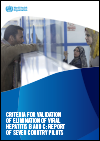
Resource | Publications,
A series of country pilots (Brazil, Egypt, Georgia, Mongolia, Rwanda, Thailand and United Kingdom of Great Britain and Northern Ireland) of the elimination criteria across the six WHO regions was undertaken during 2021–2022. The main objective was to conduct a practical assessment and evaluate the feasibility of accurately measuring the impact and programmatic targets for hepatitis elimination as established by the WHO Interim guidance for country validation of viral hepatitis elimination.
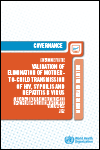
Resource | Publications,
Achieving validation of elimination of mother-to-child transmission (EMTCT) of HIV, syphilis and hepatitis B virus (HBV) is a tremendous accomplishment, requiring health ministry–led accountability, rigorous data analysis, intensive programme assessment and multilevel collaboration. This governance guidance outlines the standardized structures and processes used to validate EMTCT of HIV, syphilis and HBV at the national, regional and global levels. Replacing an earlier version published in June 2020 addressing EMTCT of HIV and syphilis, this revised governance document aligns with new information in the Global guidance on criteria and processes for validation: elimination of mother-to-child transmission of HIV, syphilis, and hepatitis B virus, in which WHO sets criteria for validation of triple elimination.

Resource | Publications,
The 2022 Consolidated guidelines on HIV, viral hepatitis and STI prevention, diagnosis, treatment and care for key populations outline a public health response to HIV, viral hepatitis and sexually transmitted infections (STIs) for 5 key populations (men who have sex with men, sex workers, people in prisons and other closed settings, people who inject drugs and trans and gender diverse people).
The guidelines present and discuss new recommendations and consolidate a range of recommendations and guidance from current WHO guidelines which are summarised here in this policy brief.
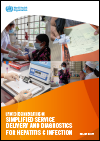
Resource | Publications,
This policy brief, one of two on the updated hepatitis C (HCV) guidelines, focuses on the new recommendations on simplified service delivery for a public health approach to HCV testing, care and treatment. These recommendations include decentralization, integration and task-sharing, in addition to the use of point-of-care (POC) HCV viral load assays and reflex viral load testing.






